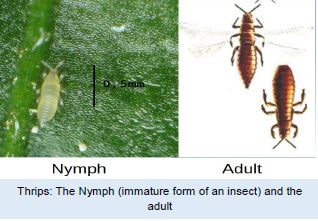A new species of pest is wreaking havoc on the chilli crop in the South Indian states of Telengana and Andhra Pradesh.
Thrips Parvispinous, a new species of invasive bug, came into the country along with imported papaya from Indonesia in 2015. By feeding on the meristems (young developing tips) of the host plant, it creates severe feeding scars, leaf abnormalities, and discolouration of buds, flowers, and premature fruits.
They are also vectors (carriers) for viruses which can infect plants.
The infection is so severe and widespread that it has impacted about 9 lakh acres of chilli crop. 20-25 insects were found on each bud or flower, and nearly 70% of the crop was destroyed in both states. The yield of chilli is dramatically reduced as a result of this. The infection has also spread to Tamil Nadu and Karnataka.
Farmers discovered the insect for the first-time last season, but they were able to control it using pesticides. However, because of the overuse of insecticides, the bug has acquired resistance, making prevention difficult during this season.
It has also infected other vegetable crops, especially drumstick trees, and was seen on cotton plants in some areas.
Experts from the State Agricultural University and the Indian Institute of Horticultural Research in Bengaluru toured several fields, advising farmers not to use too many pesticides and promoting the use of neem oil and neem cakes.
Because so little is known about this new invasive species, further research is needed before recommending a preventive method to cope with future infestations. However, many farmers are abandoning the crop in favour of other crops in the current season.

